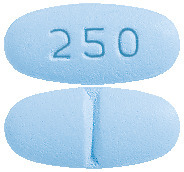1. Why am I using Levetiracetam GH?
Levetiracetam GH contains the active ingredient levetiracetam. Levetiracetam GH is used to control epilepsy. For more information, see Section 1. Why am I using Levetiracetam GH? in the full CMI.
2. What should I know before I use Levetiracetam GH?
Do not use if you have ever had an allergic reaction to levetiracetam or any of the ingredients listed at the end of the CMI.
Talk to your doctor if you have any other medical conditions, take any other medicines, or are pregnant or plan to become pregnant or are breastfeeding.
For more information, see Section 2. What should I know before I use Levetiracetam GH? in the full CMI.
3. What if I am taking other medicines?
Some medicines may interfere with Levetiracetam GH and affect how it works.
A list of these medicines is in Section 3. What if I am taking other medicines? in the full CMI.
4. How do I use Levetiracetam GH?
- For patients 12 years of age and older, the dosage is generally between 1000 mg and 3000 mg each day, taken in two doses.
- For children 4 to 11 years of age the doctor will calculate the dosage based on the child's weight and tell you how much to give. The medicine is to be given twice daily.
More instructions can be found in Section 4. How do I use Levetiracetam GH? in the full CMI.
5. What should I know while using Levetiracetam GH?
| Things you should do |
|
| Things you should not do |
|
| Driving or using machines |
|
| Drinking alcohol |
|
| Looking after your medicine |
|
For more information, see Section 5. What should I know while using Levetiracetam GH? in the full CMI.
6. Are there any side effects?
Common side effects include: dizziness, feeling weak, headache, common cold, upset stomach, diarrhoea, feeling tired, drowsy or sleepy.
Serious side effects include: mood changes such as depression, nervousness, aggression, anger, anxiety, confusion, hallucination, irritability, feelings of depression, upper respiratory tract infections, weight loss.
Very serious side effects include: thoughts of harming yourself, more frequent or more severe seizures, shortness of breath, wheezing or difficulty breathing, swelling, blistering or peeling skin around the face, lips, mouth, throat, tongue, genitals or other parts of the body, rash, itching or hives on the skin.
For more information, including what to do if you have any side effects, see Section 6. Are there any side effects? in the full CMI.

